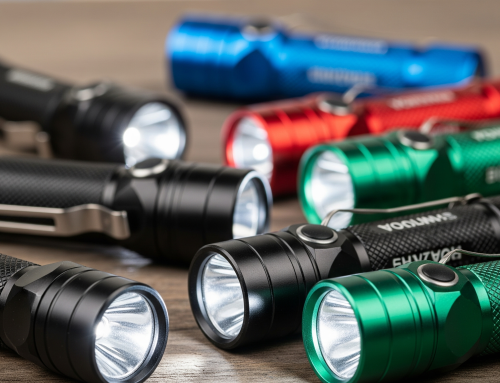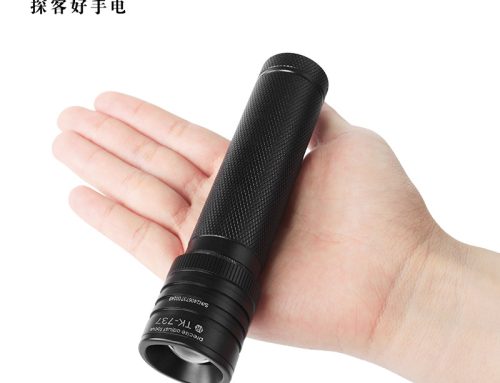
Flashlight (often referred to as a torch outside North America) could be moveable hand-held electrical lights. Usually, the supply of light is from a tiny incandescent bulb or light-emitting diode (LED). A typical torch consists of a bulb, mounted in an exceedingly reflector, that has a transparent cover (sometimes combined with a lens) for the protection of the lamp and reflector, battery and a switch. These are supported and guarded by a case.
The invention of the dry cell and miniature incandescent light bulbs made it possible for the first powered flashlights around 1899. Today’s flashlights use principally incandescent lamps or light-emitting diodes and run on disposable or reversible batteries. Some are driven by the user turning a crank or shake the light, and a few have solar panels to recharge the battery.
In addition to the overall purpose of the hand-held torch, several forms have been tailored to specific applications. The top or helmet-mounted flashlights designed for miners and campers leaving your hands free. Some flashlights are used below water or in flammable atmospheres.
Early flashlights ran on zinc-carbon battery which couldn’t deliver a steady current and needed periodic “rest” so as to operate still. As a result, of these new flashlights additionally used energy-inefficient carbon filament lamps, occurred “rest” with short intervals. So they will be utilized solely briefly.
Powerful white-light-emitting diodes (LED) has exchanged incandescent bulbs in flashlights. LEDs have been around for many years, primarily as low-power indicator lights up. Introduced in 1999, Lumileds Corporation of San Jose, California, introduced Lexicon, white LED-light electrode. This potentially led flashlights with power and period better than light bulbs. The first lexicon directed electric lamp was the Arc LS, designed in 2001. White LEDs in five-millimetre diameter packages manufactures solely some lumens each; several devices may be classified along to provide extra light.
The light output from led flashlights varies even wider than incandescent bulbs. “Keychain” kinds lamps operate on button batteries or light using one five millimetre LED, will solely produce a couple of lumens. Even little light-emitting diode flashlight operated on an AA cell but equipped with an LED power indicator can output one hundred lumens. The foremost powerful LED torch produces more than a thousand lumens and may use a lot of power LEDs.
LEDs are very efficient to provide coloured light compared with incandescent lamps and filters. An LED torch will contain discrete LEDs for white and light-coloured, user selectable for various functions. Coloured LED flashlights are used for signalling, special inspection duties, forensic investigation, or to track blood trail of wounded game. A flashlight could have a red LED intended to preserve dark adaptation of vision. Ultraviolet LEDs is mostly used for the inspection light, for instance, detection of fluorescent dyes is superimposed air-con systems to detect leakage, examine the paper currency, or ultraviolet management radiation fluorescent marks on the laundry or event price tag holders. Infrared LEDs is mostly used for lighting for sight systems. Crystal rectifier flashlights are such to be compatible with sight instrumentation



